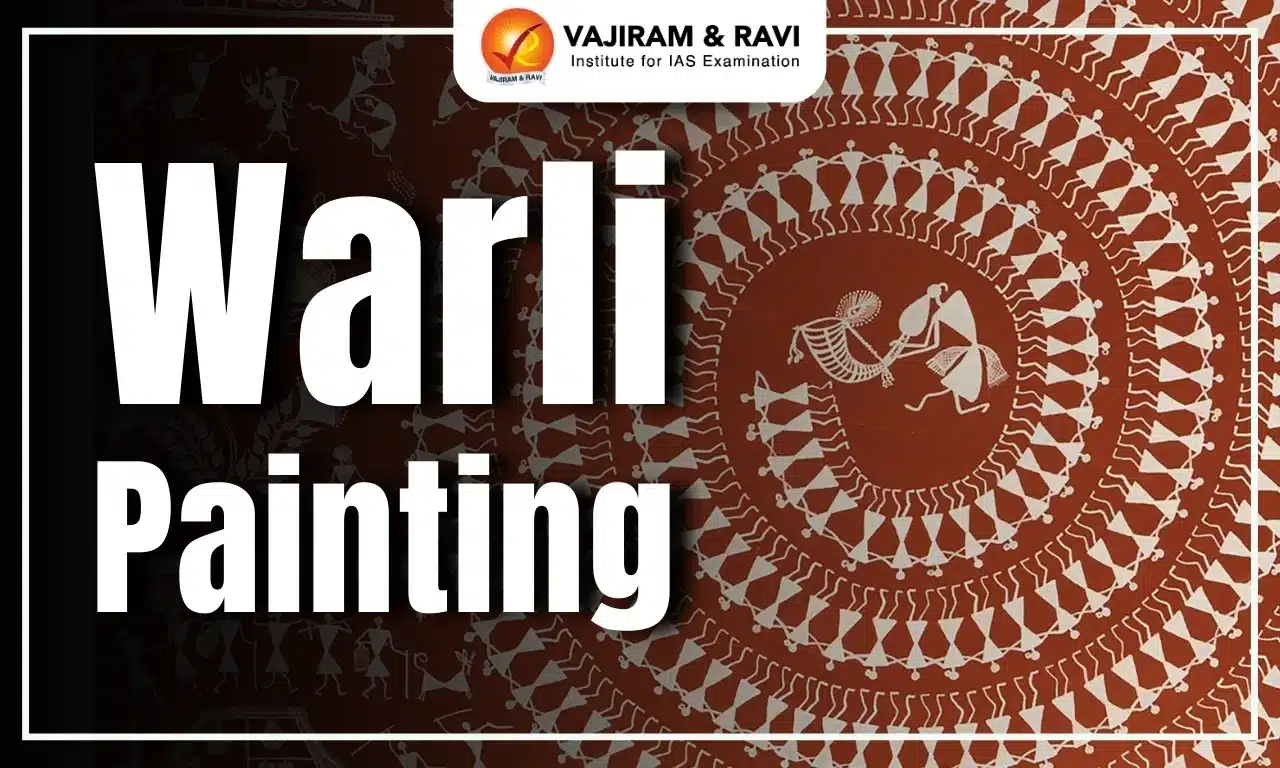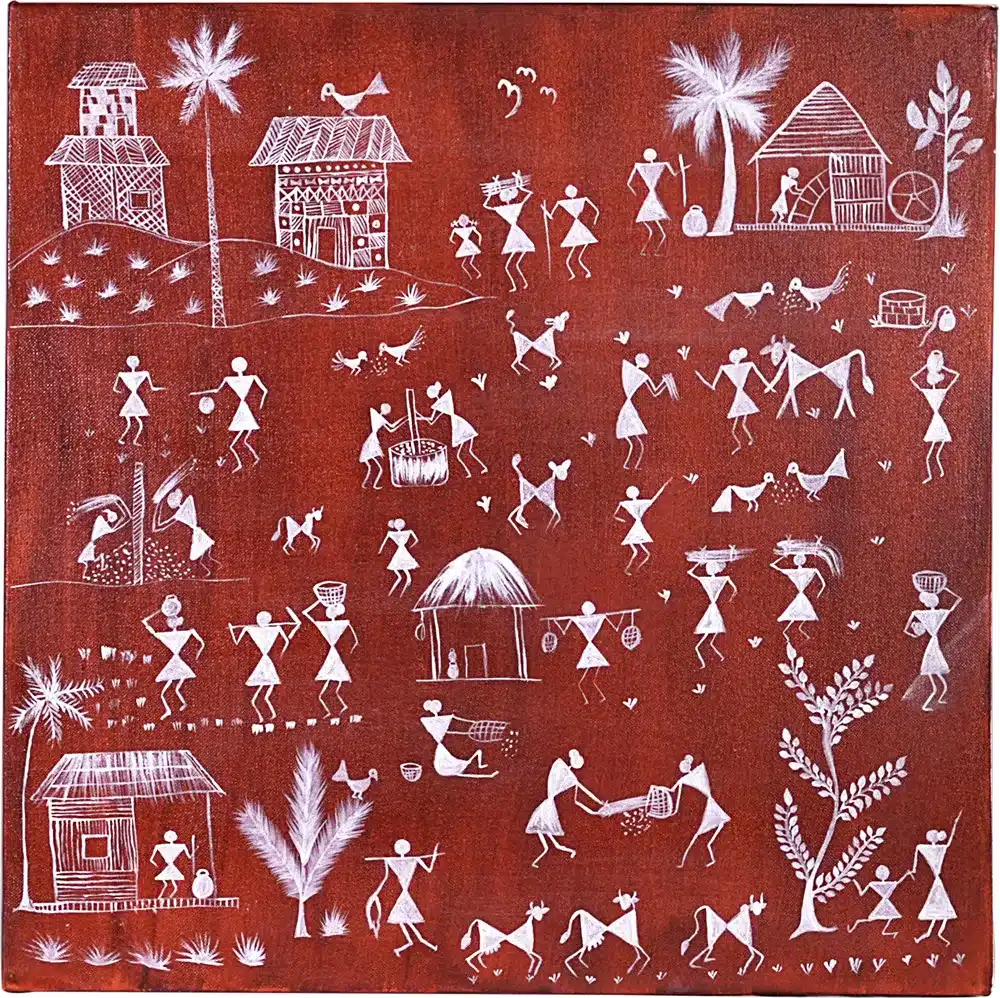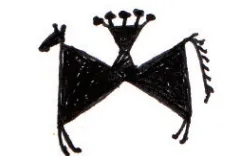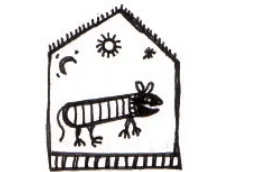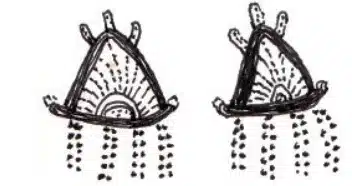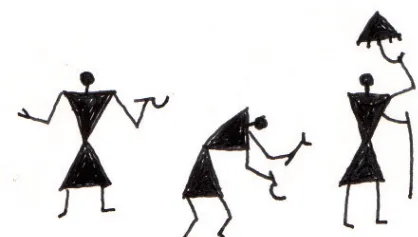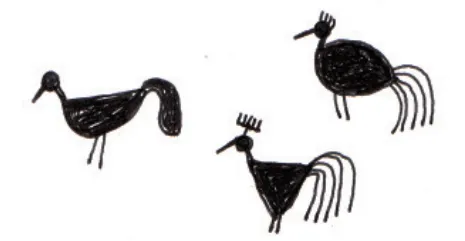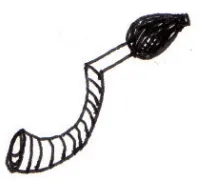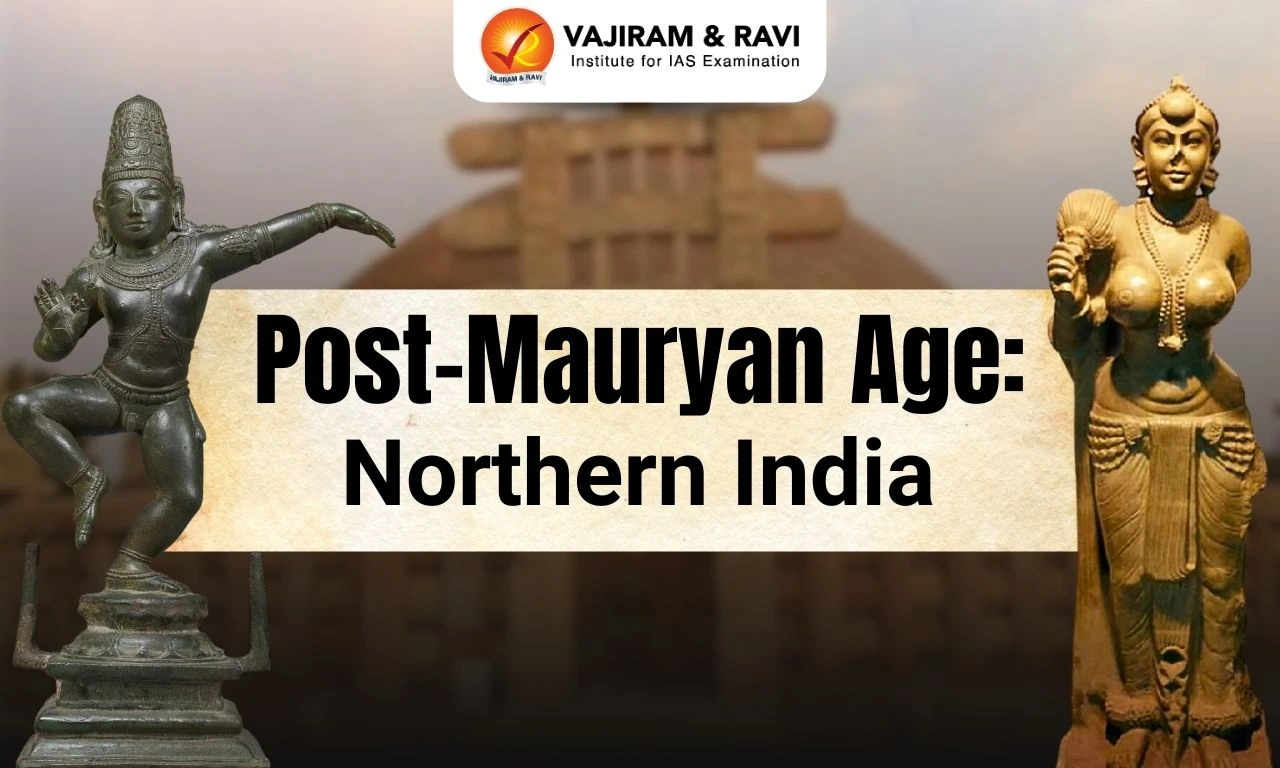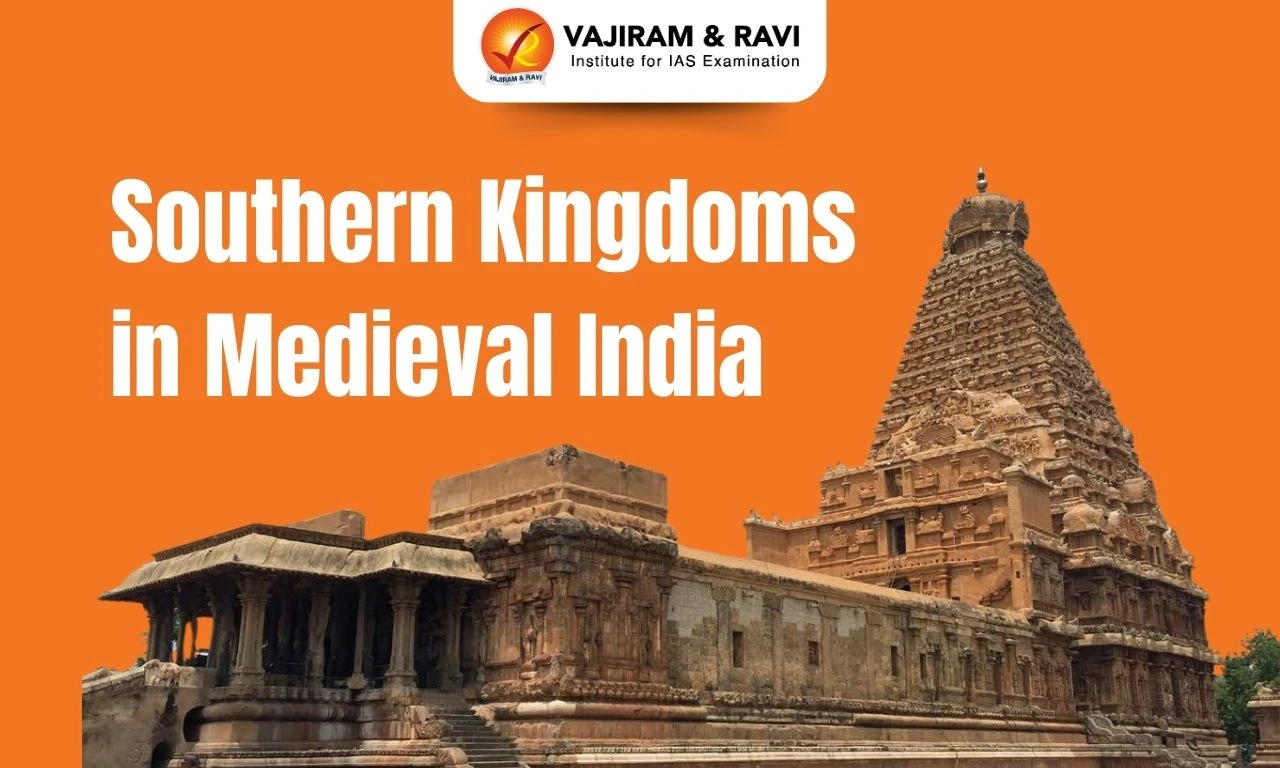Warli painting is a tribal art form from the Warli community of Maharashtra’s North Sahyadri (Western Ghat) range, dating back to the 10th century C.E. It uses geometric shapes to depict daily life, rituals, and nature, often on mud-coated surfaces with rice paste. The art reflects strong cultural ties, spiritual beliefs, and reverence for nature.
Traditional motifs include deities like Palaghat Devi, Panch Siriya, and Bagh Dev, animals, vegetation, and the iconic Tarpa dance. The Warli tribe, once semi-nomadic, now predominantly practices agriculture. Their art preserves tribal identity, fosters community bonding, and has gained global recognition for its cultural significance.
About Warli Painting
Warli painting is a tribal art created by the Warli community in the North Sahyadri Range of Maharashtra. Considered one of the finest examples of folk painting, Warli Painting is believed to have originated in the 10th century C.E., although it gained widespread recognition only in the 1970s.
- Traditionally, Warli artists use the mud walls of their clay huts as canvases, similar to how ancient peoples used cave walls for their artwork.
- This practice connects the artists to their cultural heritage and highlights their strong relationship with nature and their surroundings.
Warli Painting Characteristics
Warli paintings are a traditional tribal art form that beautifully captures the essence of daily life, nature, and spirituality. Characterized by simple geometric shapes and earthy materials, these artworks reflect the Warli community’s deep-rooted connection to their environment and cultural traditions.
- Depiction of Daily Life: Warli paintings depict everyday village life, showing activities like farming, hunting, dancing, and other communal scenes.
- Marriage and Celebrations: They often illustrate marriage rituals, dance, and processions, celebrating community and tradition.
- Basic Geometric Shapes: Simple shapes—circles (sun and moon), triangles (mountains and trees), and squares (sacred enclosures)—form the foundation of Warli art.
- Triangular Human Figures: These figures are often depicted in dynamic poses, reflecting the energy and movement of daily life.
- Communal Creation: Traditionally created by women, Warli paintings are now made by both genders and often involve group participation, fostering a shared cultural identity.
- Natural and Earthy Materials: The art uses natural materials—backgrounds of mud and cow dung, and white pigment from rice paste mixed with water and gum.
- Connection to Nature: Warli art reflects a deep respect for nature, often featuring the sun, moon, animals, and plants.
- Spiritual Elements: The paintings include deities and ritual scenes, showcasing the tribe’s spiritual beliefs and practices.
Warli Painting Traditional Warli Motif
Warli paintings are deeply rooted in tribal traditions and often depict scenes from daily life, nature, and rituals. Especially during marriage ceremonies, specific symbolic elements such as deities, animals, vegetation, and musical expressions are prominently featured to convey cultural and spiritual meanings.
- Palaghat Devi Chowk: A central motif in wedding paintings, showing the goddess Palaghat Devi within a square enclosure.
- Panch Siriya: This five-headed deity is usually shown as a protective horseman figure and is sometimes placed in the chowk.
- Bagh Dev: This is painted as an image of a tiger on a wooden pole.
- Chandra-Surya: They are worshipped as tribal natural forces.
- Bride and groom riding a horse: In paintings made for marriage rituals, the groom is shown on horseback, or the bride and groom standing inside a bandanavar.
- Crown/Maur: In marriage paintings, the bride and groom are shown wearing headgear called Maur/Sehra, a crown for the bridegroom.
- Vegetation: Palm and other vegetation are shown extensively in Warli paintings.
- Human figures: Human figures involved in various activities are an important part of Warli paintings. They are shown dancing, in a marriage procession, running, farming, hunting and other daily activities as men and women.
- Flora-fauna: Beautiful depiction of flora and fauna is done in Warli paintings in which peacocks, deer, goats, horses, cock, hens, cows, lions, birds, spiders, ants, jackals, cranes etc. are prominent.
- Tarpa: This is a musical instrument played by a group of young men and women while doing the Tarpa dance. It is the most popular image in the Warli paintings.
Warli Painting Process
Warli painting process begins with preparing the surface by coating it with a mixture of cow dung and red mud to create a smooth, dark background. The artist outlines the figures and motifs using a bamboo stick dipped in rice paste. The figures are then filled in with intricate patterns and detail. The process of creating Warli paintings is often accompanied by rituals and ceremonies, underscoring their spiritual significance.
Warli Painting Significance
Warli Painting captures the simple lives of the Warli people. It illustrates their beliefs in the cycle of time through spherical paintings. It serves as a powerful tool for preserving the cultural heritage and traditions of the Warli tribe. The act of painting is often a communal activity, fostering unity and a sense of shared identity among tribe members.
- The paintings depict deities and spiritual symbols, reflecting the tribe’s religious beliefs and connection to nature.
- In recent years, Warli art has gained global recognition, providing economic opportunities for the tribe through the sale of their artworks.
Warli Tribes
Warli tribe, one of India's largest indigenous communities, resides near Mumbai along the Maharashtra-Gujarat border. With a culture dating back to 2500–3000 BCE, they were once semi-nomadic and lived in small groups led by a headman. Due to demographic changes, they now primarily engage in agriculture, cultivating crops like rice and wheat.
- It encompasses animistic beliefs, customs, and traditions, although they have also integrated many Hindu practices due to acculturation.
- The Warli speak the unwritten Varli language, part of the southern zone of the Indo-Aryan languages.
- In Warli community, women typically wear toe rings and necklaces to signify their marital status.
- Additionally, some community members practice polygyny, reflecting the tribe's cultural traditions.
- Elements of nature are often focal points in Warli Paintings, illustrating their strong connection to the environment.
Last updated on December, 2025
→ Check out the latest UPSC Syllabus 2026 here.
→ Join Vajiram & Ravi’s Interview Guidance Programme for expert help to crack your final UPSC stage.
→ UPSC Mains Result 2025 is now out.
→ UPSC Notification 2026 is scheduled to be released on January 14, 2026.
→ UPSC Calendar 2026 is released on 15th May, 2025.
→ The UPSC Vacancy 2025 were released 1129, out of which 979 were for UPSC CSE and remaining 150 are for UPSC IFoS.
→ UPSC Prelims 2026 will be conducted on 24th May, 2026 & UPSC Mains 2026 will be conducted on 21st August 2026.
→ The UPSC Selection Process is of 3 stages-Prelims, Mains and Interview.
→ UPSC Result 2024 is released with latest UPSC Marksheet 2024. Check Now!
→ UPSC Prelims Result 2025 is out now for the CSE held on 25 May 2025.
→ UPSC Toppers List 2024 is released now. Shakti Dubey is UPSC AIR 1 2024 Topper.
→ UPSC Prelims Question Paper 2025 and Unofficial Prelims Answer Key 2025 are available now.
→ UPSC Mains Question Paper 2025 is out for Essay, GS 1, 2, 3 & GS 4.
→ UPSC Mains Indian Language Question Paper 2025 is now out.
→ UPSC Mains Optional Question Paper 2025 is now out.
→ Also check Best IAS Coaching in Delhi
Warli Paintings FAQs
Q1. Which part of India is famous for Warli Paintings?+
Q2. What is the colour used in Warli Painting?+
Q3. Who is the father of Warli Painting?+
Q4. In which district Warli Painting is done?+
Q5. Which tribe is famous for Warli Painting?+



